In response to the ever-growing concern of climate crisis, renewable energy sources such as nuclear power plants are witnessing global growth. It continues to be a relevant source of energy for most countries that have already tapped into nuclear energy. Although not renewable, nuclear energy is still recyclable. It also produces zero greenhouse gases, serving as the second-largest source of low-carbon energy in the world. This is behind hydro-power. Though it has been operational for decades, the technology around nuclear power is still developing. Works on clean nuclear power are being explored, and further investment in the fuel source from governments around the world. Using information obtained from the International Atomic Energy Agency (IAEA), this article ranks the top 10 largest nuclear power plants globally. Nuclear power capacity has grown steadily over the past decade, with a 20.3 GW(e) increase between 2012 and 2023.
1. Kashiwazaki-Kariwa Nuclear Power Plant- Japan
Updated November 19, 2025: The world’s largest nuclear power plant is ready for commissioning as it awaits word from Niigata prefacture governor. The verdict is one that holds a huge significance for the entire country. “I would like to make a decision and express it soon,” Mr Hideyo Hanazumi said at his regular weekly media briefing on Nov 19. His approval is the last remaining hurdle that Tokyo Electric Power Company (Tepco) must clear before relaunching production at the Kashiwazaki Kariwa facility in the Niigata region. Furthermore, the proposed restart of the plant’s No. 6 unit would mark the first time that Tepco has operated a nuclear facility since the Fukushima disaster in 2011. Mr Hanazumi was speaking a day after visiting the Fukushima Dai-chi Nuclear Power Plant. The plant is also operated by Tepco and was the site of the meltdown.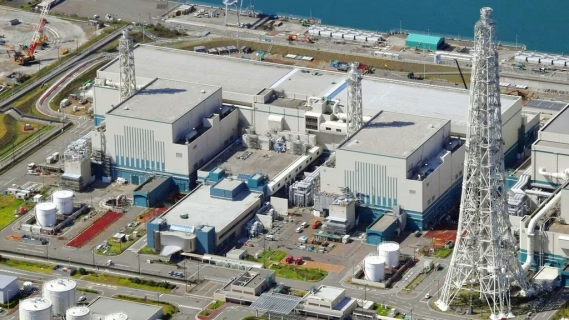
Though the power plant is currently suspended, the Kashiwazaki-Kariwa nuclear power plant is the largest in the world. It spans the towns of Kashiwazaki and Kariwa and has a total output of 8.212 million kW. The plant has been rendered inactive since 2012 after the Fukushima Daiichi Accident. Opened in 1985 and owned by Tokyo Electric Power Co. (TEPCO), it has a net capacity of 7,965 MW, making it the largest nuclear power plant in the world. It totals seven boiling water reactors (BWR) — the first five with 1,067MW net capacity each and the other two with 1,315MW. It is located on a 4.2-square-kilometer site in Niigata Prefecture, Japan.
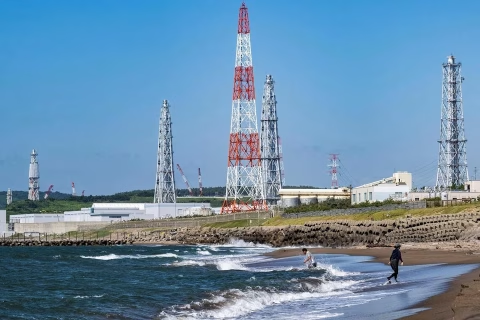
2. Hanul Nuclear Power Plant- South Korea
The Hanul Nuclear Power Plant, located in Gyeongsangbuk-do province, South Korea, is the largest nuclear plant in the country with an installed capacity of 7,338MW. It was previously known as the Ulchin Nuclear Plant but was renamed Hanul Nuclear Power Plant in 2013. It is the largest South Korean nuclear power plant and the second largest globally. The plant currently has a net capacity of 7,338MW, made up of six PWR Hanul reactors. Each of these reactors varies from 966MW to 999MW. The Shin Hanul-1 (PWR) which has a net capacity of 1414MW. Shin Hanul-2, a PWR due to having a net capacity of 1340MW was connected to the grid in June 2022. The construction of Shin Hanul-3 and 4 is expected to end in 2024.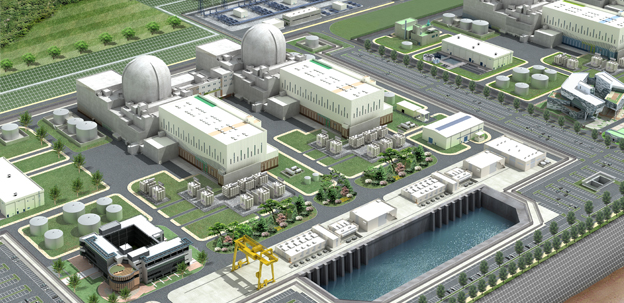
3. Bruce Nuclear Generating Station- Canada
Ranking third among the largest nuclear power plants is the Bruce Nuclear Generating Station in Canada. Owned by Ontario Power Generation (OPG) and operated by Bruce Power, the plant has a net capacity of 6,358 MW. It consists of eight pressurized heavy water reactors (PHWR) with net capacities varying from 769MW to 817MW. The plant became fully commercially operational in May 1987. It is located on the eastern shore of Lake Huron in Ontario, Canada. 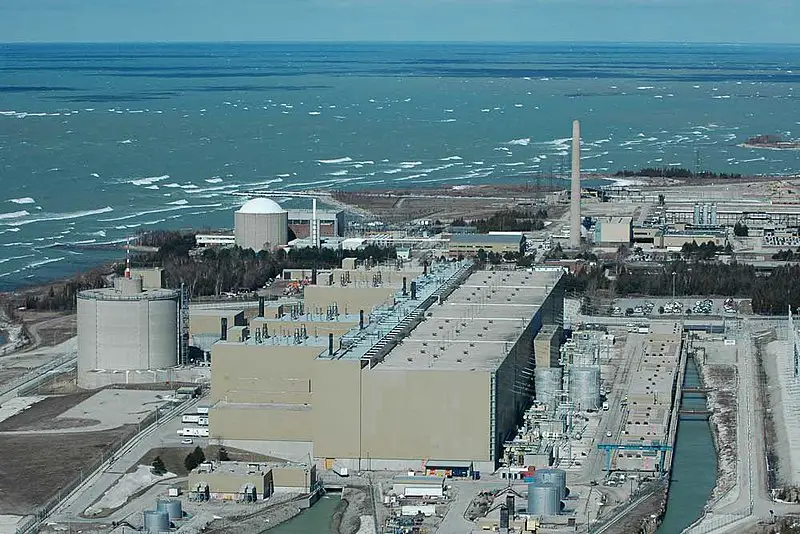
4. Yangjiang Nuclear Plant- China
The Yangjiang nuclear plant is the fourth largest nuclear plant in the world. It is owned by China Guangdong Nuclear Power Company (CGNPC). The nuclear plant is operated by the Yangjiang Nuclear Power Company. As of 2019, it is the largest nuclear power station in China. The plant replaced fossil energy with nuclear energy, leading to a reduction of coal consumption by 30.9Mg and carbon dioxide emissions by 80.8Mg. Located in the Guangdong province, China, it has a net capacity of 6,000MW from six 1,000MW PWRs.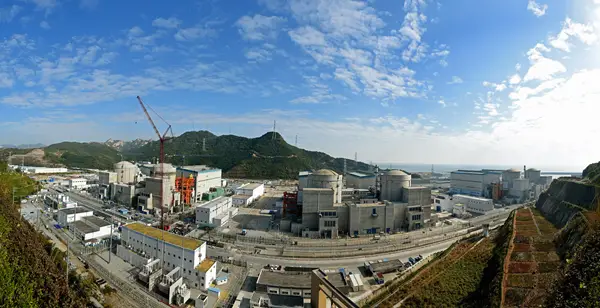
5. Hanbit Nuclear Plant- South Korea
The Hanbit Nuclear Power Plant is a large nuclear power station in the Jeollanam-do province of South Korea. The nuclear plant is formerly known as the Yeonggwang Nuclear Power Plant. The Nuclear Power Plant has an installed net capacity of 5,924MW. It is the fifth-largest nuclear power plant in the world. The power plant is operated by Korea Hydro & Nuclear Power (KHNP). It consists of six PWR reactor-type units commissioned between 1986 and 2002.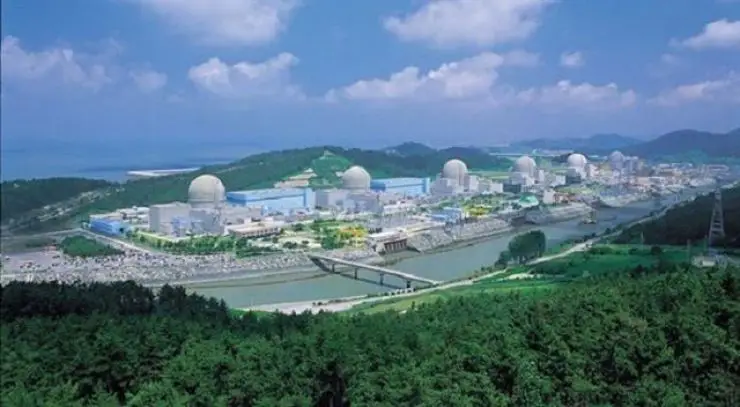
6. Zaporozhye Nuclear Plant- Ukraine
The plant is owned and operated by Energoatom, Ukraine’s National Nuclear Energy Generating Company. The Zaporozhye Nuclear Power Plant was once responsible for more than one-fifth of the country’s total electricity generation. The plant is the largest power plant in Europe with a net capacity of 5,700MW. The plant is currently experiencing a temporary shutdown because of the ongoing war between Ukraine and Russia. 
7. Gravelines Nuclear Plant- France.
The Gravelines Nuclear power plant in France is the seventh largest nuclear plant in the world. It has a net production capacity of 5,460MW. The plant is owned and operated by EDF, and the nuclear power facility is the largest in France. It is located near Calais and uses cooling water from the North Sea. It consists of six nuclear reactors of 900 MW each. In 2017, the plant produced 31.67 TWh of electric energy, 5.9% of French electricity production.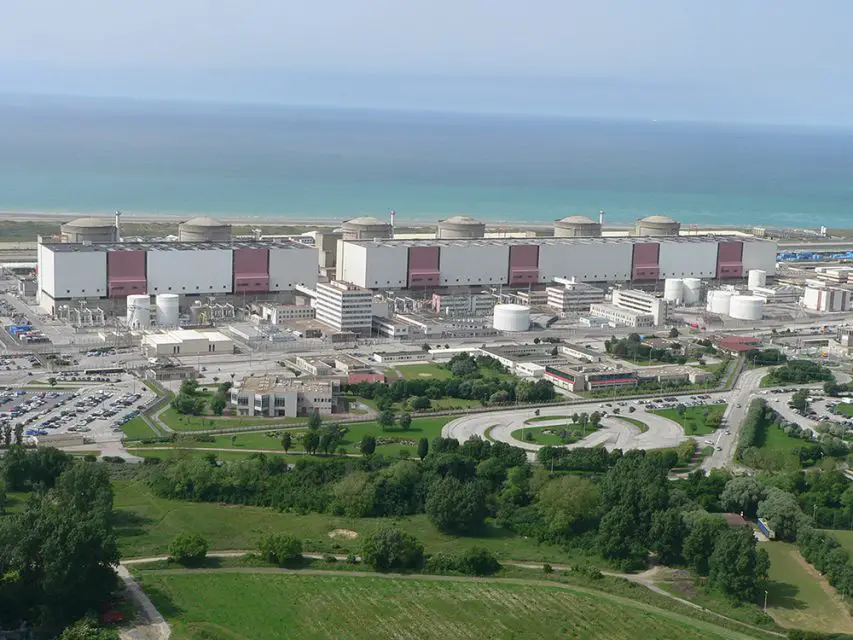
8. Paluel Nuclear Plant- France.
The Paluel Nuclear plant is also located in France and is the eighth largest in the world. It consists of four PWRs with a net design capacity of 5,320MW. The plant is located 40km away from Dieppe and spread across the waterfront of the English Channel. This facilitates for which allows sustainable cooling from the Channel. The plant is owned and operated by EDF.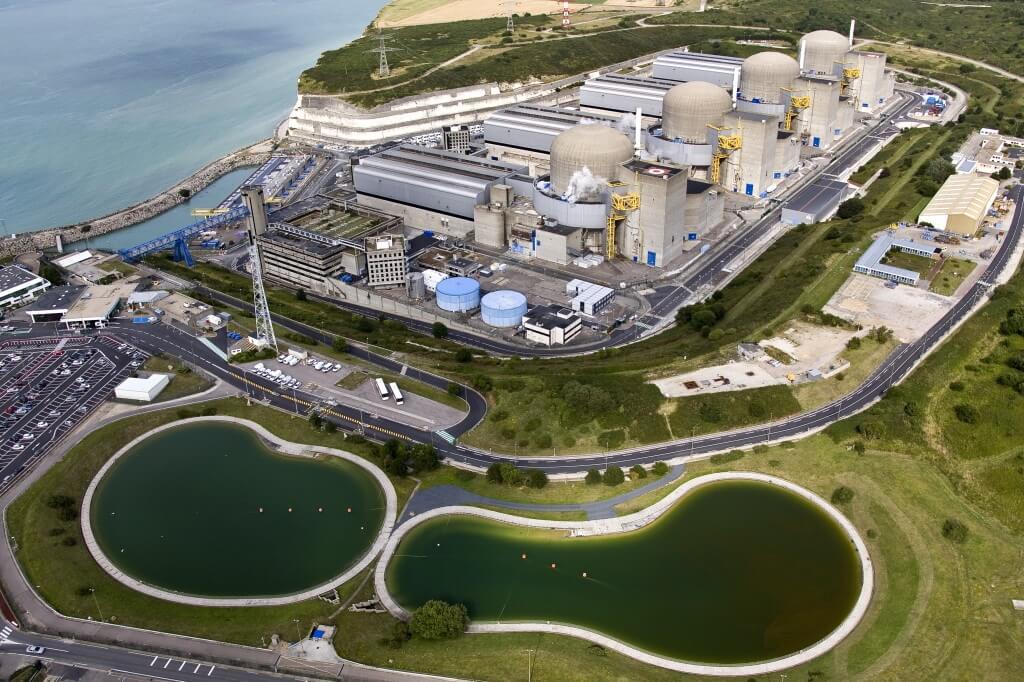
8. Cattenom Nuclear Plant- France
Tied in position eight in the largest power plants in the world, the Cattenom plant shares the spotlight with Paluel. Also located in France, the plant is made up of four PWRs rated at 1,300MW each. Located in Cattenom, France, the plant is owned and operated by the French electric utility company Electricite de France and uses cooling water from the Moselle River.
10. Kori Nuclear Plant- South Korea
The Kori nuclear power plant is made up of five reactors, Kori 2, 3, and 4, and Shin Kori 1 and 2 which total a net capacity of 4,655MW. Kori 1 is permanently shut down.
Also read:
El Dabaa nuclear plant is set to receive the core of its first nuclear reactor
Bill Gates-backed nuclear plant to launch first project in Wyoming

